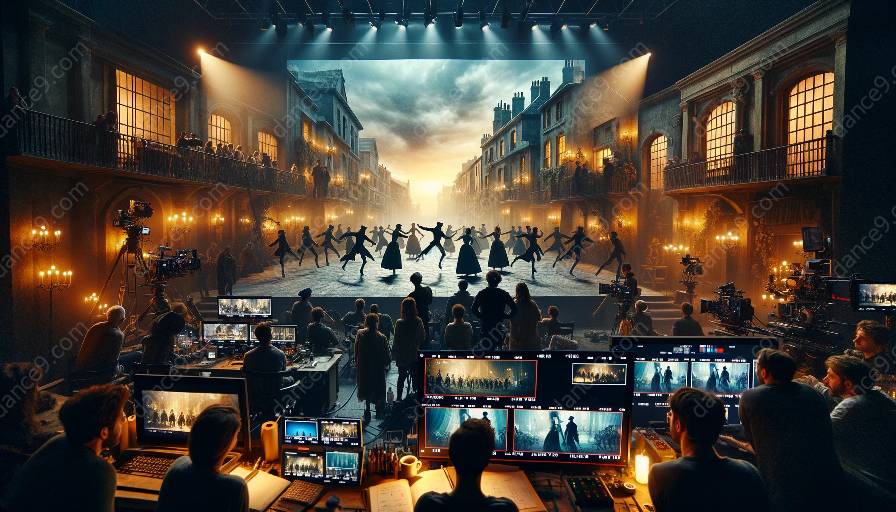Choreography for film and television involves a unique set of considerations and challenges, particularly when it comes to choreographing dance numbers for musicals. In this comprehensive guide, we will delve into the best practices for choreographing dance numbers and how choreography plays a crucial role in bringing dance sequences to life on screen.
The Role of Choreography in Film and Television Musicals
Choreography is an essential aspect of film and television musicals, as it dictates the movement and expression of characters through dance. The choreographer not only designs the dance sequences but also works closely with directors, cinematographers, and other production crew to ensure that the choreography seamlessly integrates with the overall vision of the film or television show.
Unlike stage productions, choreography for film and television must be adapted to fit the framing, editing, and pacing of the camera. Moreover, choreographers must consider the spatial limitations of sets and locations, as well as the technical requirements for capturing dance sequences on camera.
Best Practices for Choreographing Dance Numbers
1. Understand the Story and Characters
Before choreographing a dance number, it's essential to have a deep understanding of the story and characters. The choreography should reflect the narrative and personalities of the characters, effectively conveying emotions and enhancing the storytelling through movement.
2. Collaborate with the Director and Cinematographer
Choreographers must collaborate closely with the director and cinematographer to ensure that the dance sequences are synchronized with the camera movements and framing. This collaboration is crucial for achieving visually captivating dance numbers that complement the overall visual style of the production.
3. Adapt Choreography to Camera Angles and Movement
Choreography for film and television requires careful consideration of camera angles, movements, and editing techniques. Choreographers must design the dance sequences with these factors in mind, allowing for dynamic and impactful visuals that enhance the audience's viewing experience.
4. Utilize the Environment and Props
Effective choreography takes advantage of the environment and available props to create visually captivating dance numbers. Whether it's utilizing a specific location or incorporating props into the choreography, thoughtful use of the environment can elevate the overall production value.
5. Rehearse and Iterate with Performers
Rehearsals are essential for refining and perfecting the choreography with the performers. Choreographers should encourage open communication and feedback during rehearsals to ensure that the dance numbers align with the performers' abilities and strengths.
6. Emphasize Musicality and Rhythmic Precision
Choreographing dance numbers for musicals requires a keen emphasis on musicality and rhythmic precision. Choreographers must synchronize the movements with the music, ensuring that every step and gesture complements the musical score and enhances the auditory and visual experience for the audience.
Conclusion
In conclusion, choreographing dance numbers for film and television musicals requires a meticulous approach that considers the unique dynamics of on-screen productions. By understanding the role of choreography, collaborating with the production team, and prioritizing storytelling and visual impact, choreographers can create compelling and memorable dance sequences that enhance the overall cinematic experience.






































